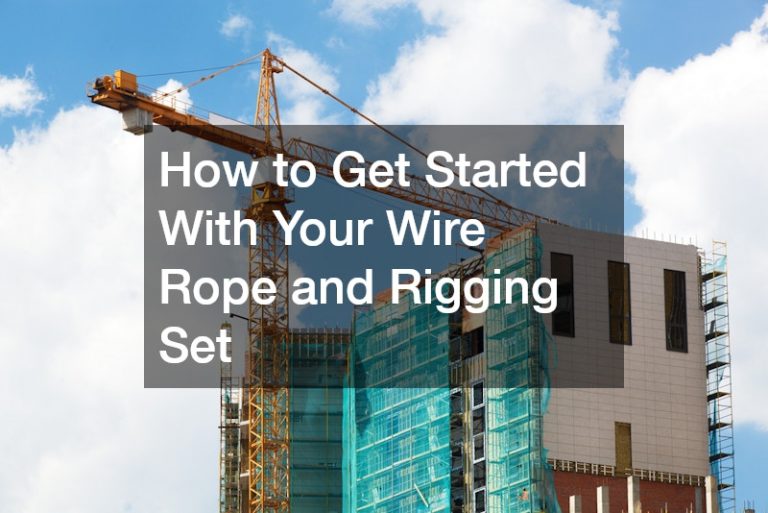Getting started with a wire rope and rigging set requires a clear understanding of the components, proper handling, and adherence to safety protocols. Wire ropes are essential for various lifting, pulling, and rigging tasks in industries such as construction, shipping, and manufacturing. Here’s a comprehensive guide on how to get started with your wire rope and rigging set:
1. Understand the Components
Wire Rope: The primary component, wire ropes consist of multiple strands of metal wires twisted together.
They come in various constructions, such as 6×19 or 6×36, indicating the number of strands and wires per strand. Choose the wire rope based on your specific application needs.
End Fittings: Wire ropes can be fitted with various end attachments like thimbles, hooks, or shackles, which help in connecting the rope to other rigging equipment.
Rigging Hardware: This includes shackles, turnbuckles, clips, and hooks. Each piece of hardware has specific uses and load ratings, so ensure you have the appropriate equipment for your tasks.
2. Select the Right Wire Rope
Choose the wire rope based on factors such as load capacity, flexibility, resistance to abrasion, and environmental conditions. Consider the following:
Load Capacity: Ensure the wire rope can handle the maximum weight of your loads, with an appropriate safety margin.
Flexibility: Depending on your application, select a wire rope with the necessary flexibility. Ropes with more strands and wires per strand are generally more flexible.
Environmental Conditions: For corrosive environments, choose galvanized or stainless steel wire ropes to resist rust and degradation.
3. Inspect the Wire Rope
Before using your wire rope and rigging set, conduct a thorough inspection. Check for:
Visible Damage: Look for broken wires, kinks, corrosion, and other signs of wear.
End Fittings: Ensure that all end fittings are securely attached and free from damage.
Rigging Hardware: Inspect shackles, hooks, and other hardware for wear and proper function.
4. Proper Handling and Storage
Proper handling and storage extend the life of your wire rope:
Uncoiling: When uncoiling a new wire rope, roll it out on a clean surface to prevent kinks and twists. Avoid dragging it on rough surfaces.
Storage: Store wire ropes in a dry, cool place, away from direct sunlight and chemicals. Use racks or reels to prevent kinks and bends.
5. Setting Up Your Rigging
Follow these steps to set up your rigging:
Attach End Fittings: Securely attach the appropriate end fittings to the wire rope. Use wire rope clips or swaging tools as needed to ensure a secure connection.
Connect to Load: Attach the wire rope to the load using the appropriate rigging hardware. Ensure all connections are secure and properly aligned.
Tensioning: Use turnbuckles or other tensioning devices to adjust the tension in the wire rope. Ensure even tension distribution to avoid overloading any part of the rigging.
6. Safety Considerations
Safety is paramount in rigging operations:
Training: Ensure all personnel involved in rigging operations are properly trained and understand safety protocols.
Load Limits: Never exceed the working load limit (WLL) of the wire rope and rigging components.
Regular Inspections: Conduct regular inspections of the wire rope and rigging hardware to identify and address any signs of wear or damage promptly.
7. Maintenance
Regular maintenance is essential for safe and efficient rigging operations:
Cleaning: Clean wire ropes and hardware regularly to remove dirt and debris.
Lubrication: Apply appropriate lubricants to wire ropes to reduce friction and prevent corrosion.
Repairs: Replace any damaged components immediately to maintain the integrity of the rigging system.




